Among Saab enthusiasts, few paint codes evoke stronger emotion than Lightning Blue. It wasn’t just a color – it was the announcement of intent. When Saab launched the 9-3 Viggen in 1999, that shimmering metallic blue became the symbol of Trollhättan’s last great performance car developed under independent Swedish engineering spirit.
Now, more than two decades later, one of those early Viggens has resurfaced in near-immaculate condition – and it’s creating waves on Bilweb Auctions in Sweden. With just 105,585 kilometers on the odometer, this first-year example has already reached its reserve at 165,000 SEK ahead of the November 13 auction finale, with experts predicting it could surpass 200,000 SEK before the hammer drops.
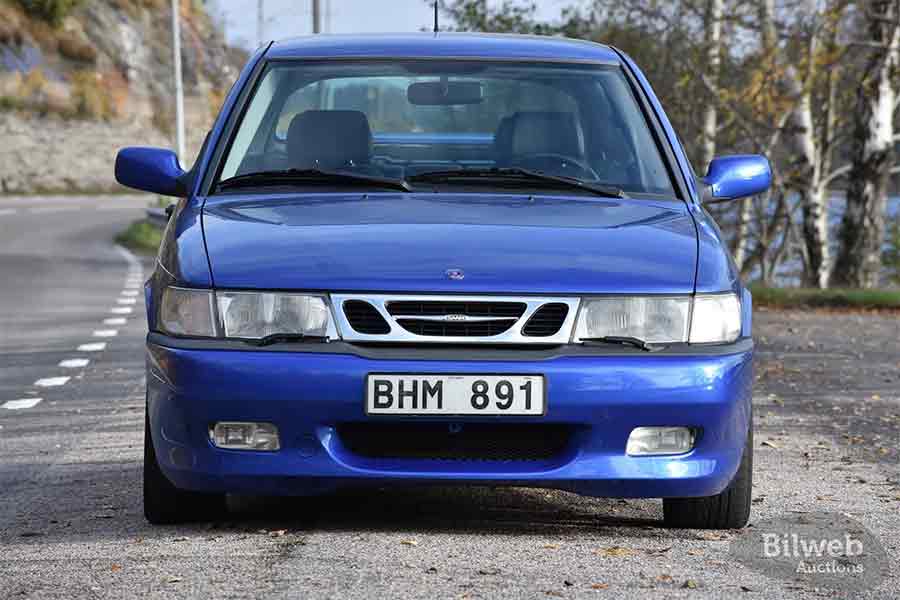
For Saab fans, this isn’t just another listing. It’s a time capsule – one of the earliest production Viggens, finished in the launch color, owned by the same woman for nearly two decades, and cherished by only two private owners in total.
A car born from flight and pride
When Saab engineers conceived the Viggen project, they didn’t set out to make a marketing gimmick. They built it to prove that Saab’s aerospace DNA could still translate into automotive performance.
The model’s name, “Viggen,” pays homage to the Saab 37 Viggen fighter jet, Sweden’s supersonic delta-wing aircraft designed by the same company that gave the world the Saab 92, 99, and 900. In the late 1990s, Saab Automobile’s performance division, in collaboration with Tom Walkinshaw Racing (TWR), created a high-output version of the B234R engine – a 2.3-liter turbocharged four that delivered 225 horsepower and 342 Nm of torque.
Power went to the front wheels through a manual gearbox and limited-slip differential, giving the car an immediate, muscular response – sometimes bordering on unruly torque steer, but that only added to its character. Saab enthusiasts didn’t want a polished GT; they wanted something alive, analog, and unpredictable.
Between 1999 and 2002, just 4,600 examples were built across all body styles (three-door, five-door, and convertible), with fewer than 100 still registered and roadworthy in Sweden today.
From Malmö showroom to lifelong devotion
This particular car was sold new by Bilpartner Malmö in early 2000, priced at 349,900 SEK – a serious sum at the time, signaling its position as the top of Saab’s performance hierarchy. The first owner, a woman who traded in her Saab Convertible for something “a little more powerful,” chose the Lightning Blue launch color and kept the car for 19 years.
Her decision reflected what many Saab loyalists understood even then: the Viggen wasn’t just a faster 9-3. It was the spiritual successor to the Saab 900 Turbo 16 Aero, the last model that fully embodied the company’s fighter-jet philosophy in both name and behavior.
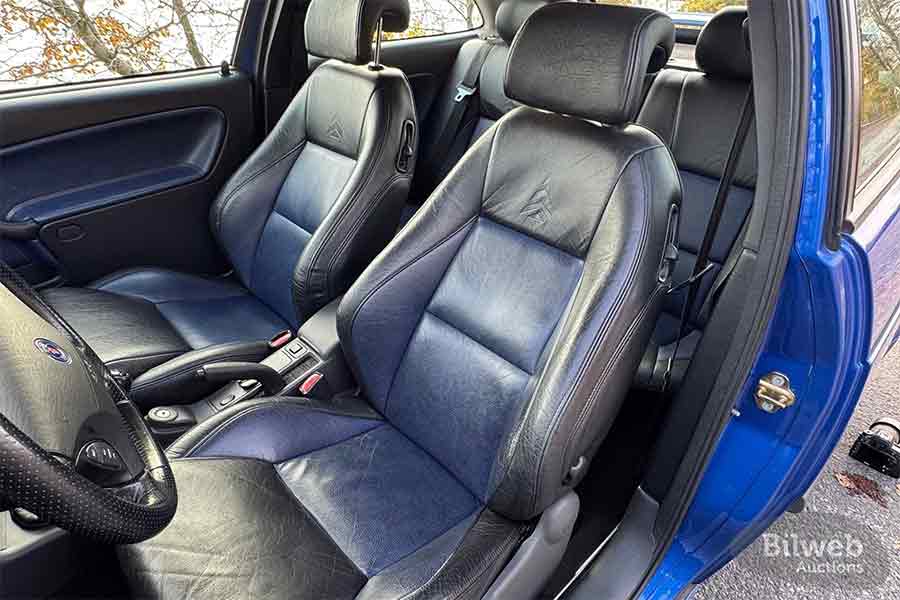
Over nearly two decades, she maintained the car meticulously, ensuring that every service was logged, every inspection recorded, and every receipt kept. When she finally sold it in 2019 to the current owner – another Saab enthusiast – she passed on not just a vehicle, but a legacy of care.
The preservation of originality
Today, the car remains entirely original – no aftermarket modifications, no aggressive tuning, no oversized alloys or body kits. The engine still produces the factory-rated 230 horsepower, and all systems operate as Saab engineers intended.
The service documentation reads like a masterclass in proper maintenance. Crankcase ventilation was renewed in 2017, while clutch and slave cylinder were replaced in 2019. The air conditioning currently awaits a refrigerant refill, but otherwise, the car is mechanically sound and has recently passed inspection without remarks, valid until December 2026.

Even the CR2032 batteries in the key fobs were recently replaced – a small detail that says everything about the kind of owner this car has had.
Inside, the two-tone leather interior shows minimal wear, with only light scuffing on the driver’s bolster. The dashboard remains uncracked, the switches operate smoothly, and every electrical component – from power mirrors to seat adjustments – works perfectly.
The sound and fury of a true Viggen
Driving a Viggen is not like driving a modern turbocharged hatchback. It’s not about refinement – it’s about response. When the large Mitsubishi TD04 turbocharger spools up, the surroundings blur. The Viggen surge – that distinct mid-range wave of torque – is what separates it from everything else Saab built after GM’s acquisition.
On the open road, the car feels alive in a way that few vehicles today can replicate. The steering communicates every contour of the tarmac, the throttle is immediate, and the turbo hiss serves as a mechanical symphony from a bygone era. As one Saab enthusiast put it: “When the turbo kicks in, the world starts to fade.”
That sentence now serves as the unofficial motto of this auction listing – a fitting tribute to a machine that still carries the intensity of its fighter-jet namesake.
Beneath the surface – where Swedish engineering endures
Inspecting the underbody reveals no structural rust or corrosion, only minor surface oxidation on the exhaust. The left rear wheel arch shows a small rust spot around the trim strip — a simple cosmetic repair, easily managed by any restoration shop.
The paint remains deep and reflective, especially under sunlight, thanks to past Ditec protective treatments that helped preserve its original sheen. The owner also treated and repaired a small rust bubble in the spare-wheel well, executed with great attention to factory standards.
Such preservation matters. In an age when many Viggens have been modified, tracked, or neglected, finding a clean, original one is becoming increasingly rare. That’s why collectors and enthusiasts view cars like this as investment-grade youngtimers – vehicles with historical significance and emotional value that appreciate as the years go by.
A woman’s Saab that defied time
What makes this particular Viggen stand out isn’t just its mileage or condition. It’s the story behind it – one of continuity, restraint, and respect for originality.
The first owner’s long stewardship – 20 years of regular maintenance and summer-only driving – challenges stereotypes in the performance-car world. This was not a garage queen, nor was it abused. It was driven, loved, and cared for – exactly how Saab intended its cars to live.
In the current owner’s hands, that philosophy continues. The Viggen remains garaged, driven sparingly, and maintained without compromise. As the listing notes, “It will be difficult to find another Viggen in this condition and with such low mileage.”
The market speaks – Viggens are ascending
Over the past five years, Viggens have quietly transitioned from cult favorites to serious collector assets. Cars that once hovered around 100,000 SEK are now regularly trading above 200,000 SEK, especially early examples in Lightning Blue.
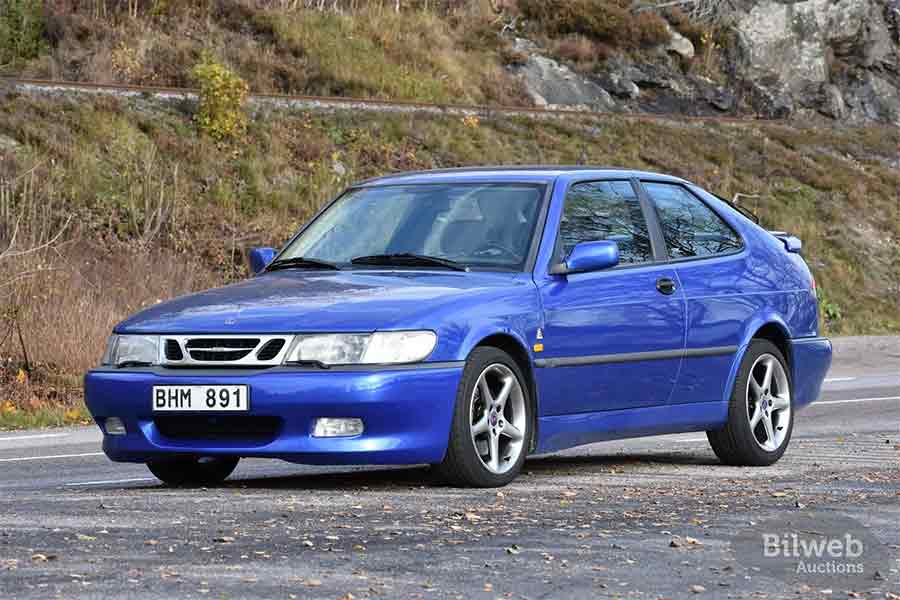
In international markets, particularly the U.S. and U.K., pristine Viggens can command $25,000–$35,000, depending on specification and provenance. The combination of low production numbers, turbocharged character, and authentic Saab design makes them uniquely desirable in a collector landscape saturated with generic performance models.
This specific car’s provenance – female-owned from new, documented service history, original paint, and factory equipment – places it in the top percentile of surviving examples.
Why the Saab 9-3 Viggen matters more than ever
The Saab 9-3 Viggen represents the last unfiltered moment of Saab performance before corporate homogenization. It bridged the gap between the analog 900 Turbo era and the modern 9-3 SS generation under GM’s control.
More importantly, it showcased Saab’s ability to combine engineering eccentricity with real-world performance. The chassis, tuned by TWR, featured revised suspension geometry, stiffer springs, and a reinforced subframe to tame torque steer – though, true to Saab form, not entirely eliminate it.
Even its interior reflected the company’s aviation roots: the driver-centric cockpit, black-on-white gauges, and wraparound dashboard. Every detail reminded you that this was not just another European performance car.
Today, as Saab’s automotive chapter remains frozen in time, cars like this Viggen carry that legacy forward. They’re tangible proof that Swedish ingenuity once stood toe-to-toe with Germany’s best, and often, with more soul.
Ready for takeoff – again
With its next owner soon to be determined, this Lightning Blue 9-3 Viggen is poised to leave its second garage and perhaps begin its third chapter. Whether it remains in Sweden or finds a new home abroad, it will continue to represent the pinnacle of Saab’s late-’90s performance philosophy – raw, honest, and beautifully over-engineered.
For the Saab faithful, this auction isn’t just about numbers. It’s about preserving one of Trollhättan’s last true driver’s cars, built at a time when engineering passion still outweighed cost analysis.
As the auction countdown continues toward November 13, one thing is certain: when this Viggen takes off again, it will do so with the same purpose it had 25 years ago – to remind the world that Saab’s spirit never really landed.





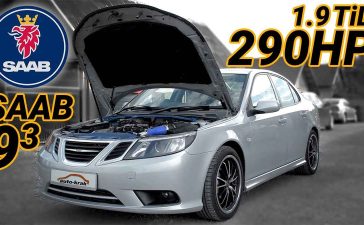
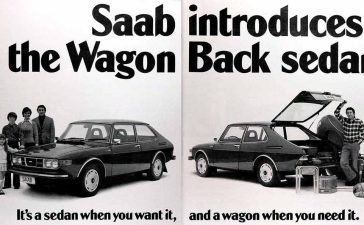
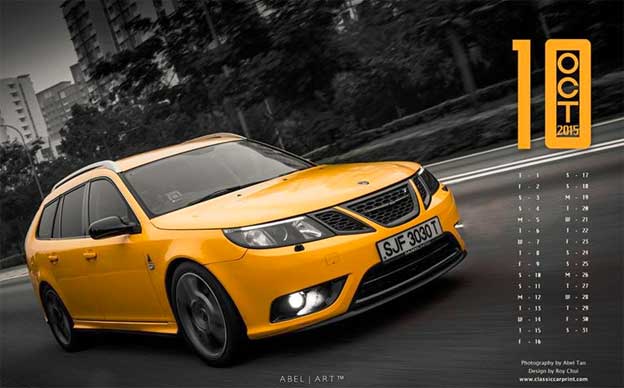
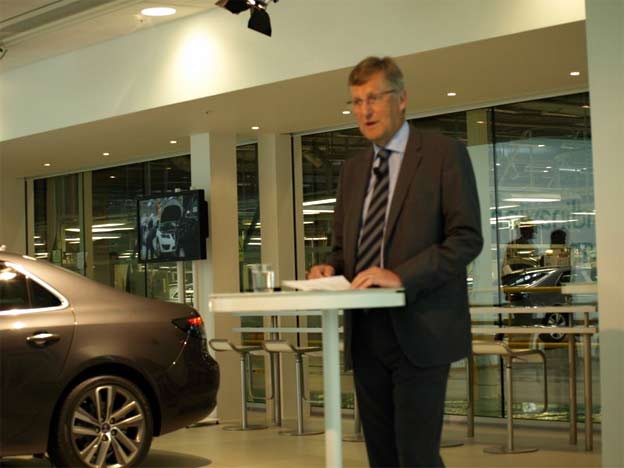


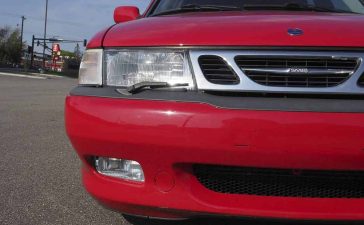
Worth mentioning that all Viggens were assembled by Valmet in Finland, not at THN
I owned a 1995 Saab 900s and loved it completely never once let me down even in snow up to its headlights still didn’t let me down went right through it like butter lol lost it all cause of a damn Mercedes running stop sign an hit me totaled my Saab but damn car was damn good car motor sounded like new even after the wreck frame was done cause of wreck
I own an awesome 2006 9-5, 2.3 turbo Sportcombi. I love my Saab, have and always had Mercedes, Jags, Daimler, Cads, a few Japanese, etc. Subaru stole so much from Saab and the white boys at GM just wanted the money. So what is it about Saab being legendary or “ahead of its time?” If it’s that great someone should start anew and bring it back.
I always wanted a lightning blue Viggen…. Settle for a black convertible…. 👍